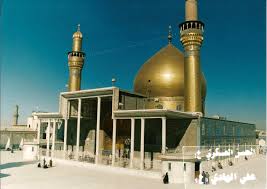Taqiyya, Throughout the History of Imamiyya Thought, up to the 5th Century

This thesis surveys the viewpoints of Imamiyya shiite scholars on Taqiyya with an historical approach.Chapter one is on introductory matters such as definition
Abstract:
This thesis surveys the viewpoints of Imāmiyya shiite scholars on Taqiyya (dissimulation of one, s faith in fear of persecution), with an historical approach.
Chapter one is on introductory matters such as definition of Taqiyya and related notions to it as well as its types.
In the second chapter, Taqiyya has been surveyed throughout Qurān and Prophet, s tradition; surveying the verses of Qurān we encounter tens of them in which Taqiyya has been endorsed by Allah Subhānaho Va Taālā. Furthermore, the great Prophet Muhammad and his Sahābah (disciples) mostly practiced Taqiyya (of Ikrāhi and Khowfi types) before Hijrah (His migration from Mecca to Medina), changing it to Modārātee type after that; reviewing Prophet, s tradition these different types are discernible.
In the third chapter, Taqiyya is studied throughout Asr-e-Huzoor (the era of presence of Imams), dividing it to six levels, based on the policy of then rulers and the rate of Imams and their followers, life convenience as a result, a factor influencing the level and type of Taqiyya practiced. During the era of Imām Ali Taqiyya is almost a Modārātee one, while in that of Imām Mojtabā, Ikrāhi and Khowfi types were also practiced, intensifying throughout the Imāmate period of Imām Husein and reaching its zenit by the era of Imam Sajjād (May Peace Be upon All of Them).
On the commence of riots in the era of Imām Bāgher, resulting in the power transmission from Bani Umayyah to the Abbāsids, Taqiyya is reduced, therefore, the life convenience of the next Imām, Sādegh, and his followers soars. However, most of narrations on Taqiyya, especially Ikrāhi and Kitmāni were issued by His Excellency Himself.
By the time of the Abbāsids ascending the throne of Cāliphate, Khowfi type of Taqiyya intensified due to their repressive approach. During the last ten years of Hāroon, s Cāliphate, Imām Rezā practices less Taqiyya, turning into a “Relief” throughout the Cāliphate of Ameen and Mamoon.
From the era of Imām Javād onwards, this relief started to break down, being accelerated throughout the Imāmate of the two Asgaree Imāms.
Finally, the fourth chapter explores the practice of Taqiyya in the era of Imām-e- Asr (the Imām of present time) in two parts: Seerah (Tradition), and Towghi,āt (Letters), then it is studied regarding to Novvab-e-Arba-e (The Four Deputies), the common Shiite community, as well as the Imāmiyya scholars up to the fifth century (Hijri) whether formalist or rationalist.
Key Words: Taqiyya, Ikrāhi, Modārātee, Khowfi, Kitmāni, Ahl-e- Beit
